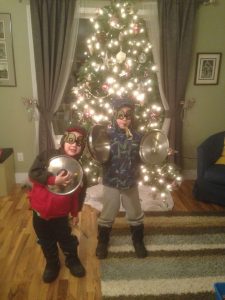My curation began with a quick scan to see if I knew any of the songs. Immediately, I saw the Chuck Berry song and thought of my Dad dancing. He loved to party! Back in the 70’s, he had these wicked shoes (which I later wore for a ‘nerd’ costume in junior high school). Trying to find them online, a search of disco loafers did the trick:

I started to think of how I would curate a list for movement, but for what purpose? Unlike my groovy Dad, I have ZERO dance ability, motivation and aptitude. No amount of growth mindset can fix my moves! Which is sad because I am fairly musical and love listening to music and my inner body/brain can bust a move that my body can’t match.
Brainstorming a way to curate the Golden Record for movement, my mind shifted to professional life. I teach 0.2 ADST/Teacher Librarian and 0.8 PE. Of my PE position, half my time is spent teaching primary grades. One thing that I focus on is locomotor movement skills and use music often. I went through the list and narrowed it done based on my instinct if it was a song that I would use in class for movement activities. For the most part, Kindergarten children are open to new things, move in wacky and wonderful ways, are fun-loving, imaginative and uninhibited. They can also be brutally honest and will tell you if a song sucks (or comment on your new zit or ugly pants). Using past Kindergarten classes and children (the especially zany, memorable movers!) as inspiration and a mental reference, I used these I created these guiding questions:
- Can I visualize Kindergarten children moving to this music in various forms? Walking, running, stomping, skipping, galloping, sliding, hopping?
- Could the music be extended to involve creative movements (i.e. walk like Frankenstein, dive like a dolphin, or move like a sloth?)
- Does the beat and pattern personify the movement goals and provide variety?
- Can I predict the reaction of students to this music? Would it be positive? Would it motivate them to move?
I went through each piece and made a ‘NAY’ or ‘YAY’ list on instinct of the above questions as I listened. Could I see those little monsters stomping, skipping and giggling to the beat, effects and emotion presented in the music? Here are the ten that made the cut:
Senegal, percussion, recorded by Charles Duvelle. 2:08
Mexico, “El Cascabel,” performed by Lorenzo Barcelata and the Mariachi México. 3:14
“Johnny B. Goode,” written and performed by Chuck Berry. 2:38
Peru, panpipes and drum, collected by Casa de la Cultura, Lima. 0:52
“Melancholy Blues,” performed by Louis Armstrong and his Hot Seven. 3:05
Navajo Indians, Night Chant, recorded by Willard Rhodes. 0:57
My New Year’s Eve family tradition is to bang pots and pans on the street at midnight and dance around and make obnoxious noise. Growing up, I thought it was a common ritual that everybody did. After meeting my husband and becoming an adult, I’ve been made aware that my family is just a bunch of weirdos and we probably scared our neighbours.
Just to prove my point about how weird and wonderful youngsters can be, here is a pic of my own two monsters on New Year’s Eve (Jan 31, 2014) – ages 3 and 6. They have horn blowers, 2015-shaped glasses, large pot lids as make-shift cymbals and are braced for running out onto our street at ‘midnight’ (it was really 7:00) to make some noise. This pic is motivation for my curation: would these two bouncy, excitable, budding musicians be motivated to move and groove to the music I picked?


Hey Valerie, to your source of inspiration and comment, “my family is just a bunch of weirdos and we probably scared our neighbours” – I reply, “ME TOO!” My Mother is a retired Kindergarten Teacher so maybe you both share that in common. However, in our house, my Parents, Aunts and Uncles always changed the clocks, so we would be out banging pots at 10pm thinking it was midnight. In the end, the time did not matter to us, but the freeing feeling of jumping, banging and causing a ruckus was all we wanted to do.
Hey Valerie,
I really enjoyed the fact that you brought an “abstract” (but educationally linked) category to motivate your selection for this week. I found myself working more to the philosophy of the project, and found that quite a challenge. Thanks for sharing the fun insights into your family, I feel like I’ve got a new tradition to try out this year!
Hi Valerie,
I think it’s hilarious that we selected so many similar tracks, and had COMPLETELY DIFFERENT criteria. It kind of calls into question the value of the Palladio app as it we were depicted as a group due to our similar selections, yet that seems to have happened randomly. So while the app is able to represent data in very creative ways, I’m not not sure it truly can work as a “tool for reflective practice” as the designers intend. Although perhaps I should be taking into the consideration the context, which was to select musical tracks. If the data was related to a different type of task the results may be more revealing. Regardless I enjoyed reading about your creative approach in this post!